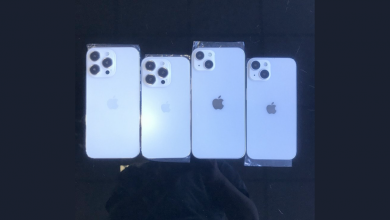What’s new in the Pixel 6 Pro camera?

[ad_1]
(Pocket-lint) – The Google Pixel has long had a reputation for excellent photos. Since the first device launched in 2016, whatever you think of Google’s phones – or in fact Android – the Pixel has been a byword for a great camera.
For some that’s been confusing: Google stuck with the same sensors and much the same experience on its phones for a number of years. While others have jumped around with different configurations, the Pixel camera has just rolled on.
But it’s all change for 2022, with the biggest switchup in the Pixel camera in the 6 years of its history.
The Google Pixel 6 Pro camera
There are three cameras on the rear of the Google Pixel 6 Pro, in that distinctively-designed Camera Bar stretching across the back of the phone.
That bar also houses the laser for assisted focus, as well as spectral and flicker sensors, as well as the flash.
Working left to right you have the main camera, ultrawide camera and then the distinctive rectangular opening for the folded/periscope telephoto.
Main camera
- 50MP, 1/1.31in, 1.2μm, f/1.85
The big news is that Google has moved to a 50-megapixel sensor, from the 12-megapixel sensor that it has used for a long time. This brings about a change like we’ve never seen before.
The older Pixel models use the Sony IMX363 sensor, with a 1/2.55in size and 12.2-megapixel resolution. The pixels on this sensor are 1.4μm.
The new sensor is thought to be the Samsung ISOCELL GN1 (this hasn’t been confirmed), but Google has confirmed that it has a 1/1.31in size, which is much bigger, and a 50-megapixel resolution. The resulting pixels are 1.2μm.
What does all this mean? Ignoring resolution for a minute, it means that the Pixel 6 Pro sensor (and Pixel 6 for that matter) is much larger than previously. Google says that it can absorb 150 per cent more light – and light is the key thing for capturing images.
The pixels on the new sensor are actually smaller, but surprisingly, not by much. At 1.2μm they’re larger than many rivals, but they are combined to give a 12.5-megapixel image (50 ÷ 4 = 12.5).
(It’s worth remembering that many high resolution sensors are no bigger than the old Pixel sensor, and have smaller pixels. That might sound good on paper, but won’t always give good results when lots of light is needed.)
The Pixel 6 Pro has a dedicated telephoto camera, but on the Pixel 6, the 50-megapixel main camera will have to provide the resolution for the 7x Super Res Zoom that it offers too.
Unlike some other phones, there’s no option to shoot in full resolution, i.e., 50 megapixel photos. We’re happy with that – there’s no real advantage to shooting much larger images unless your plan is to zoom and crop manually afterwards – and the whole point of Super Res Zoom is that you don’t do that.
There is electronic and optical image stabilisation on the main camera.
Ultrawide camera
- 12MP, 1.25μm, f/2.2, 114 degrees
The ultrawide camera is similar to what we’ve seen before, now offering what’s referred to as 0.7x zoom but up to 114 degrees wide.
Previously it was 0.6x and 117 degrees, but note that these maximum field of views aren’t always available unless you use the RAW image file.
That’s because there’s lens correction at play that will remove some of the distortion on the image and that often means the final image isn’t as wide as the stated figure.
Interestingly here the resolution has decreased (it’s 16-megapixels on the Pixel 5 and older models), but the pixel size has actually increased, so it should be better at capturing light. The aperture remains the same.

Telephoto camera
- 48MP, 0.8μm, f/3.5, 4x optical
The newness on the Pixel 6 Pro comes from the telephoto lens – the first periscope or folded type lens that Google has used, which really sees it joining the mainstream with this technology, which Samsung and Huawei have been pushing in recent devices.
Rather than having a straight light path from lens to sensor, the light is shifted through 90 degrees by a prism. That gives more space between the lens and sensor in the phone so a greater magnification can be achieved – hence the strange rectangular design.
This isn’t the first phone with a telephoto from Google – the Pixel 4 XL offered 2x – but the Pixel 6 Pro is really a step forward in ambition and will give clearer images with greater zoom.
There’s a 48-megapixel sensor for starters and while the pixels aren’t big, that resolution is there to aid the progression out to 20x Super Res Zoom. It offers OIS and EIS to keep it steady. Super Res Zoom is a hybrid zoom system that takes data from multiple frames to improve the upscaling, it basically uses a load of AI to make zoomed images better.
It means that you get better results using a pinch zoom than if you take the photo and then pinch to magnify the image – and that holds true of the 20x Super Res Zoom system of Pixel 6 Pro.
While the aperture has dropped to f/3.5, meaning less light gets to the sensor, this isn’t uncommon on telephoto lenses. Google plays the same trick that others use – like Samsung – of choosing the lens based on the light conditions. Hit the 4x zoom option in low light and you’re actually using digital zoom from the main sensor, because the results will be better than from the telephoto in those conditions.
This is easy to test – just cover the lens on the rear of the phone to see which it’s actually using. If, in low light, you want higher zooms, it will then switch to the telephoto. In some instance on the Pixel 6 Pro, you can see the switch in the app when you move from digital to optical – again, you can test by putting your finger over the corresponding lens to see what you’re actually looking at.

Front camera
- 11.1MP, 1.22μm, f/2.2, 94 degrees
The front camera on the Pixel 6 Pro steps up to 11.1 megapixels and supports 4K video. The Pixel 6 has an 8-megapixel front camera and only offers Full HD video capture.
The Pixel 6 Pro front camera is again ultrawide and like other Pixel models offers to different fields of view, so you can have something closer or something wider – ideal for group shots. Again, the wide angle figure of 94 degrees is only available in RAW, it will be lens corrected and end up a little narrower.
The front camera is fixed focus, but it offers all the modes you find elsewhere in the phone – portrait, Night Sight, Motion mode, etc. That means you can take a selfie and get the great effects you might be getting on the rear camera, so it’s a lot more versatile than some rivals.
So what’s changed in the app?
We’ve detailed what all the cameras offer, but when you open the app on the Pixel 6 Pro, not a lot has changed. Compared to the Pixel 4a 5G (both running Android 12), there’s not a lot of difference in the app itself.
This, we say, is a good thing. There’s nothing new to learn here, it’s still a simple experience, with a clutter-free interface and a general avoidance of options that will just confuse users.
Indeed, the settings menu is practically the same, touching the settings icon will pop out a menu with settings that relate to the mode you’re in (e.g., resolution in video, whether you want face retouching in portrait, etc).
What has changed is the addition of the Motion mode.
Motion mode explained
One of the new headline features that leans on AI – as so much of Google’s camera experience does – is Motion mode. This is divided into two options – action pan and long exposure.
Action pan is the sort of thing you’d use to capture something moving at speed, like a motorbike going past. Traditionally to take these shots, you’d move the camera with the bike while taking the photo, thereby blurring the background while keeping the subject sharp and in focus.
Action pan recreates this by looking at the image and figuring out what should be sharp and what should be moving.
The other option is long exposure. This is the sort of thing you’d use to create blurring in an otherwise still image – light trails or fluid motion of a waterfall for example. If using a “real” camera you might have to use a neutral density (ND) filter to reduce the light coming in so you can have a longer exposure to capture the motion without over exposing everything else. The Google Pixel 6 will do that using AI, essentially balancing out the image to give the impression of motion in the scene.
Both options are easy to use, you just have to select what you want and hit the button.

White balance slider
There is now the option to adjust the white balance manually, in addition to exposure sliders for brightness and shadows that existed before.
This is perhaps a little bit of a geeky option, but it is perhaps borne out of the fact that one area that the Pixel camera wasn’t the strongest, was in some indoor scenes. While most of the time it’s great, we’ve snapped plenty of warm indoor images – especially under artificial light – from Pixel phones.
Now you’ll be able to correct it yourself by sliding the adjuster, meaning you can strip out those erroneous yellow tones indoors. An admission of defeat, perhaps?
If you don’t want any of these manual controls they can be turned off in the settings.
Real Tone
Another addition is Real Tone. This isn’t a mode or something you can control, it’s built into the AI behind the Pixel camera.
It’s designed to recognise different skin tones, so the camera can make sure that everyone in the photo looks the way they should.
A recap of existing modes
Night Sight
The Google camera offers Night Sight which can take long exposures handheld in low light conditions with remarkable results. It uses a full range of technologies – bumping the ISO, lengthening the capture, combining multiple images and correcting to remove blur and noise – to create its images.
Astrophotography mode is an extension of Night Sight when the camera is stable and pointing at a dark sky. It will then capture images up to 4 minutes so you can shoot the stars.
Night Sight can be manually selected or automatically engaged when in darker conditions.
Portrait
Portrait is a classic, separating the foreground subject from the background to create that bokeh effect.
There are two options offered on the Pixel 6 Pro 1x or 2x so you have a slightly different focal length, although both come from the same camera. You can use it on anything you can focus on, but when a face is detected, the camera has a better idea of what the subject is.
You then have the option to adjust the image in the Tools options in Google Photos. This will let you adjust the blur or depth, and if a face is detected, to adjust the portrait light position too.
Video
Video offers slow motion and time lapse on the top of regular video. The normal video settings on the Pixel 6 Pro include 30 or 60fps, at Full HD or 4K resolutions.
Time lapse and slow motion both offer various speeds.
Within video there’s also stabilisation options, which include a couple of advanced options. There’s Locked to keep the video stable, Active for when there’s lots of movement, or there’s Cinematic Pan, which will slow things down for a smooth pan that looks professional, rather than a shaky rotation of the camera.
Modes
Finally there’s some of Google’s old modes sitting in this final option, including panorama and Photo Sphere, which can stitch together photos with amazing precision. There’s also access to Google Lens, but that option is integrated across the camera, so if you point it at a QR code, it will offer the link; if you point it at a series of numbers, it will offer those.

Additions to Google Photos
Some of the new features of the camera aren’t even in the camera, they’re in Google Photos.
There’s a real sense that Google is building its ecosystem around Google Photos, offering unique features to Pixel owners and Google One subscribers. Perhaps that’s to placate those still mourning the loss of unlimited photo storage.
Google Photos now offers couple of new tools.
Magic Eraser
Magic Eraser is, as the name suggests, a quick way to remove elements from a photo you might not want. You can take a photo and then in Tools in Google Photos you can open it up and tidy the image.
Google Photos will scan the image to see if it can detect anything to remove, but then you can just trace your finger over the elements you want to remove. A trashcan on the street behind you for example, or a sign post. You can even pinch zoom to make those removals really precise.
You also don’t need to take photos with the Pixel 6 Pro to use this – it will work with all your pictures.
Face Unblur
Face Unblur is designed to remove those blurred faces when someone just won’t keep still. When you open up Google Photos you’ll see there’s a badge on it to show it has removed the blurring.
Summing up
There’s a lot that’s familiar about the Pixel 6 Pro camera and there’s a lot that’s new. We like that Google has kept the interface and the experience similar, but has shifted the underlying technologies.
Certainly, there’s a lot that’s smart here, really showing the fusion of computational photography with newly enhanced hardware. While owners of other Pixel devices will benefit from some of these technologies, the Pixel 6 Pro is that new flagship.
We’ll be expanding this feature with more detail and lots of samples in line with publishing our final review of the Pixel 6 Pro. Stay tuned.
Writing by Chris Hall. Originally published on .
[ad_2]
Source link






